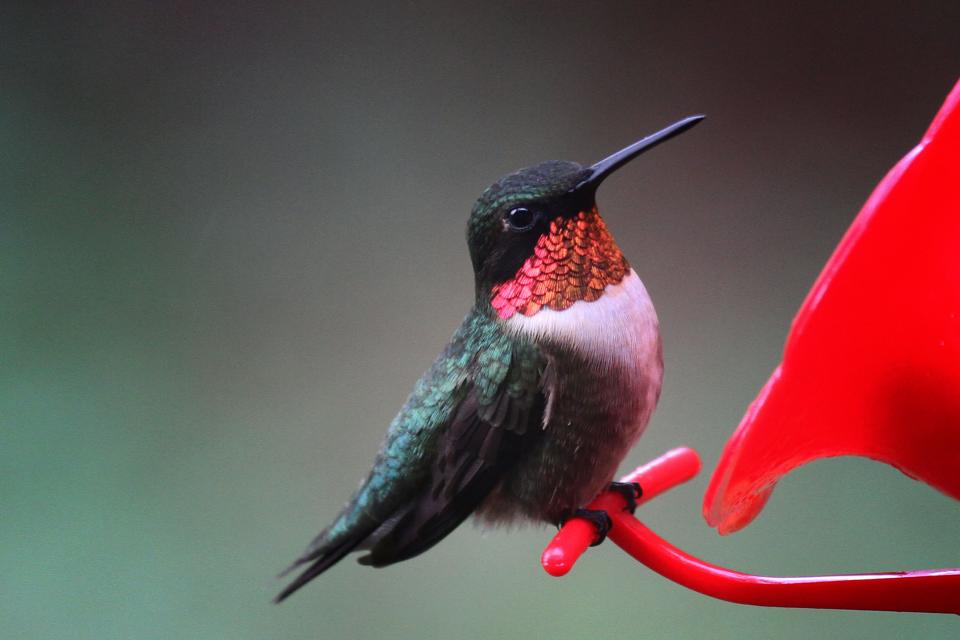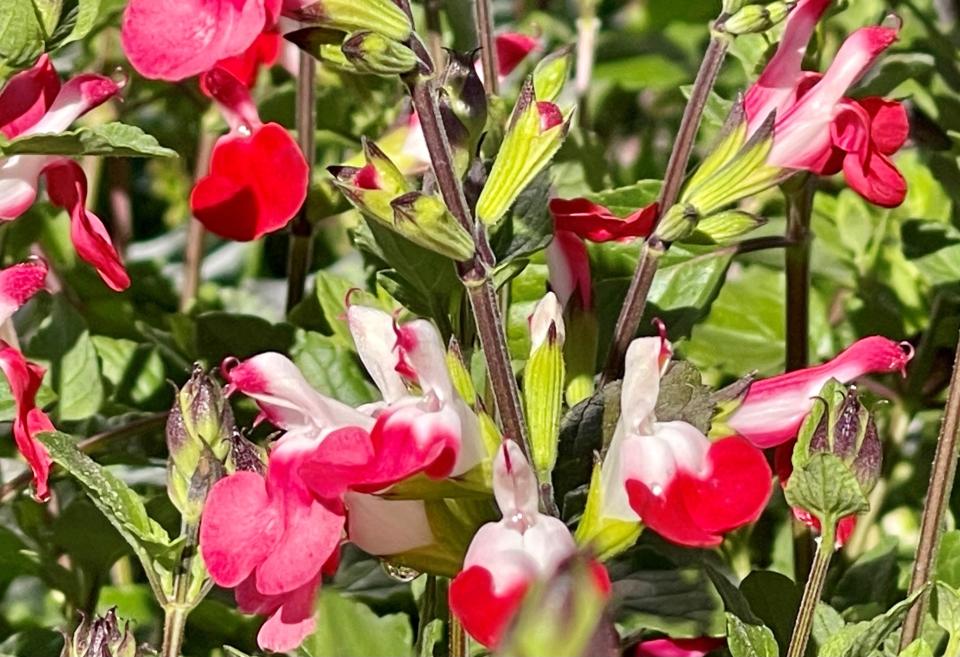Hummingbird migration map says Iowans are seeing these tiny birds. How long do they stay?
If you see a blur of something tiny and red in the air, then you may have just seen a ruby-throated hummingbird.
Dozens of sightings of these birds have been reported across Iowa from April to as recent as the first week of May.
That's according to a hummingbird spring migration map from Hummingbird Central, which is dedicated to providing information about these animals.
Ruby-throated hummingbirds are the “dominant species” seen in Iowa, though you may see a Rufous hummingbird, said Ken Freeman, a staff member with Hummingbird Central in an email to the Des Moines Register.

Ruby-throated males appear with a bright red throat. Females lack the signature red-throat and instead appear with golden-green coloring, according to All About Birds.
Bird-watchers in Iowa should enjoy sightings of these tiny birds before their southward migration begins in Iowa in late August. By mid-September, most hummingbirds have gone south, Freeman said.
What is the hummingbird migration map? How can I report a hummingbird sighting?
Hummingbird Central allows people to submit their hummingbird sightings online, but due to the volume of sightings reported, not all reports will be posted, according to its website.
The hummingbird website tracks spring hummingbird migration from late-January. This year’s map shows sightings across America and parts of Canada and includes information about which hummingbird species was spotted — keep in mind that there are over 350 known species of hummingbirds in North and South America, according to the National Audubon Society.
Which plants attract hummingbirds?

These birds consume nectar from plants in addition to small insects to even pollen and sap. They also favor flowers “red in color and tubular in shape,” says Hummingbird Central.
If you want to see the outside of your home become a hummingbird haven, grow a “diversity of nectar-producing flowers they prefer and have feeders as a supplement,” according to the University of Wisconsin-Madison.
Try plants such as lantana camara, coral honeysuckle, saliva known as "hot lips," zinnias, cardinal flower and more, according to the university.
Paris Barraza is a trending and general assignment reporter at the Des Moines Register. Reach her at pbarraza@registermedia.com. Follow her on Twitter @ParisBarraza.
This article originally appeared on Des Moines Register: When do hummingbirds come back to Iowa and how to attract them

